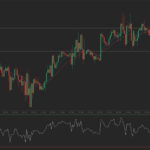The Aussie advanced against its US counterpart on Thursday, after an increase in the Australian private sectors expenditures.
AUD/USD hit a session high at 0.9150 at 10:15 GMT, gaining 0.75% on a daily basis. Support for the pair was likely to be met at November 27th low, 0.9066, while resistance was to be encountered at November 26th high, 0.9204.
Earlier on Thursday, the Australian Bureau of Statistics, released a report on the private sectors new expenditures. The report surprisingly showed that capital expenditures rose 3.6% in the third quarter, confounding analysts forecasts of a 1.2% decline, after a downwardly revised 1.6% increase in the three months to June. The indicator is inflationary adjusted and represents the expected future economic activity, as the private sector expenditures indicate what the market conditions are at the moment. An increase in the value of this indicator, suggests a better outlook for the future economic activity, while a decrease in the value indicates worse expectations about economic activity.
A report by the Housing Industry Association (HIA) indicated that new home sales in Australia fell 3.8% in October compared to September, following a 6.4% increase during the previous month. This report, however, seemed to have a limited impact on the exchange rate of AUD/USD pair.
According to the Organization for Economic Cooperation and Development (OECD) measure, which tracks purchasing-power parity, the Australian dollar was 25 percent overvalued.
Market players are keeping a close eye on the Australian dollar, after the Governor of Reserve Bank of Australia, Glenn Stevens, took a statement on November 21st at a forum of experts to mark next month’s 30th anniversary of the free float of Australia’s exchange rate. RBA Governor, cited by Bloomberg said: “While the benefits so far outweighed the costs, it doesn’t mean we will always eschew currency sales, in fact we remain open-minded on the issue.”
According to Callum Henderson, a Singapore-based global head of currency research at Standard Chartered Plc., cited by Bloomberg said: “The bar for intervention is very high. It’s a useful potential threat to mention, but it becomes less useful if they actually do it. For the time being, they’ll focus on words.”
Meanwhile, the US dollar gained appeal yesterday after a report by Thomson Reuters and the University of Michigan revealed that the final reading of the gauge of consumer sentiment in the United States climbed to 75.1 in November from a final value of 73.2 in October. Expectations pointed an increase to 73.1 in November compared to the preliminary reading of 72.0, published on November 8th, which was also the lowest point since December 2011.
Additionally, also yesterday the Department of Labor reported that the number of initial jobless claims in the US, an indicator for lay-offs in companies, dropped by 10 000 to reach 316 000 during the week ending on November 23rd 2013, confounding preliminary estimates pointing that claims will climb to 330 000. The number of claims in the preceding week has been revised up to 326 000 from 323 000 previously.
Today trading volumes are expected to remain light, as markets in the United States are closed for Thanksgiving holiday.
Elsewhere, NZD/USD touched a session high at 0.8178 at 5:05 GMT, after which consolidation followed at 0.8154, gaining 0.07% for the day. Support was likely to be found at November 27th low, 0.8116, while resistance was to be encountered at November 27th high, 0.8212. Having touched a six-month high at 102.28 during the early phase of Asian trade, USD/JPY was trading little changed at 102.15 at 7:36 GMT, dipping a mere 0.01% for the day.





